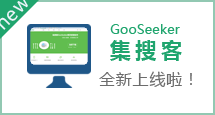Schema list
If the user wants to define a data schema for a group of Web pages, he needs not always define it from the scratch as stated in chapter Operation guides. Instead, he should search for an existing data schema which was defined by others for the same target and shared on the MetaCamp server. MetaCamp is a data schema repository and provides a series of access control methods to community members. The work board Schema List is provided just for above purpose.
On the Schema List work board, there are the following two methods to list data schemas:
- Via clicking the right-button pop-up menu item List, all data schemas on the MetaCamp server can be listed and paginated.
- After having input theme's name into the textbox below the list and hit RETURN, all data schemas matching the query condition can be listed and paginated. Wild card character "*" can be involved. For example, "Com*", "*Com*", "*" are all permitted.
The column Host of the schema list reveals if the user has generated the Data and Clue Extraction Instruction Files for this data schema and stored them on the currently connected DataStore server. If he does, an image  and character Y are presented. If he doesn't, an image
and character Y are presented. If he doesn't, an image  and character N are presented. If not sure, an image
and character N are presented. If not sure, an image  and character U are presented.
and character U are presented.
Besides List there are three more right-button pop-up menu items shown as follows:
- Info: If clicked, detailed information on the selected data schema will be presented in a pop up window, for example, theme name and middle name, owner, DataStore server hosting the instruction files, contributors to modify the instruction files, modification date etc, which are described further in MetaStudio Senior User's Handbook#Schema List.
- Load: If clicked, the data schema file will be downloaded from MetaCamp server and the data schema will be loaded onto the work boards for editing and modifying, which is one of most popular operations for users to maintain data schema.
- Delete: If clicked, the current data schema will be deleted from the MetaCamp server.
